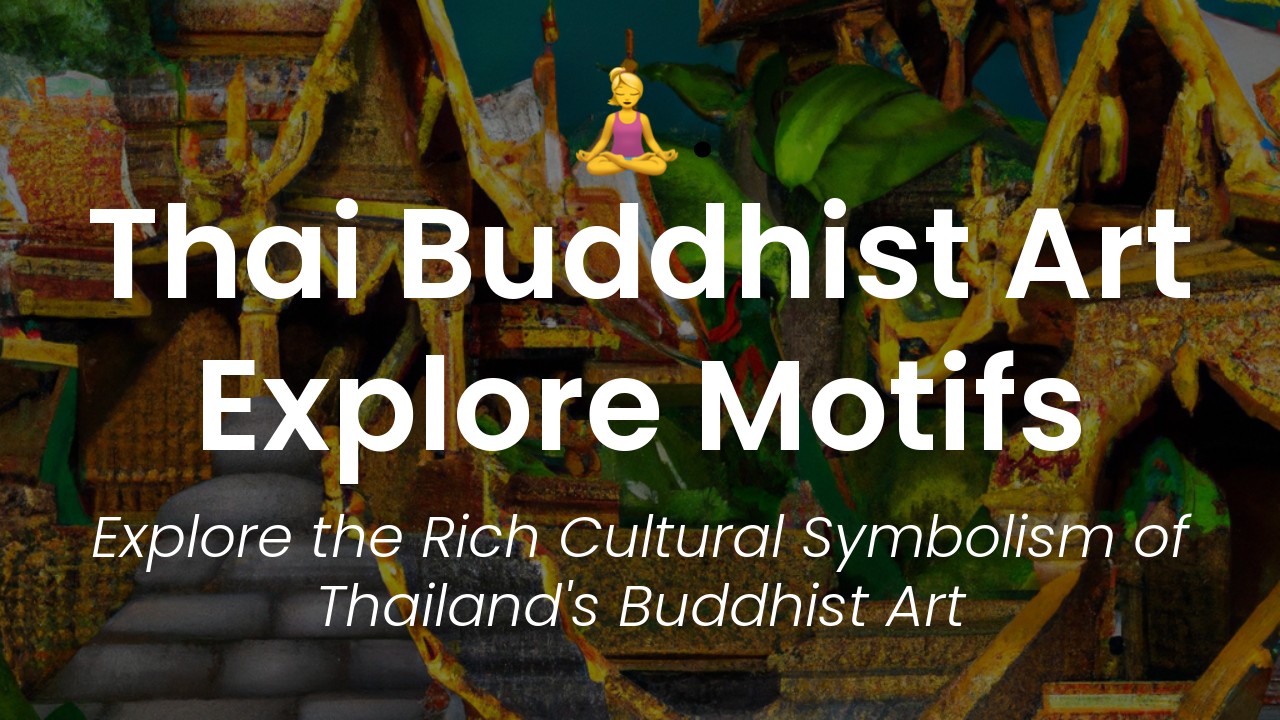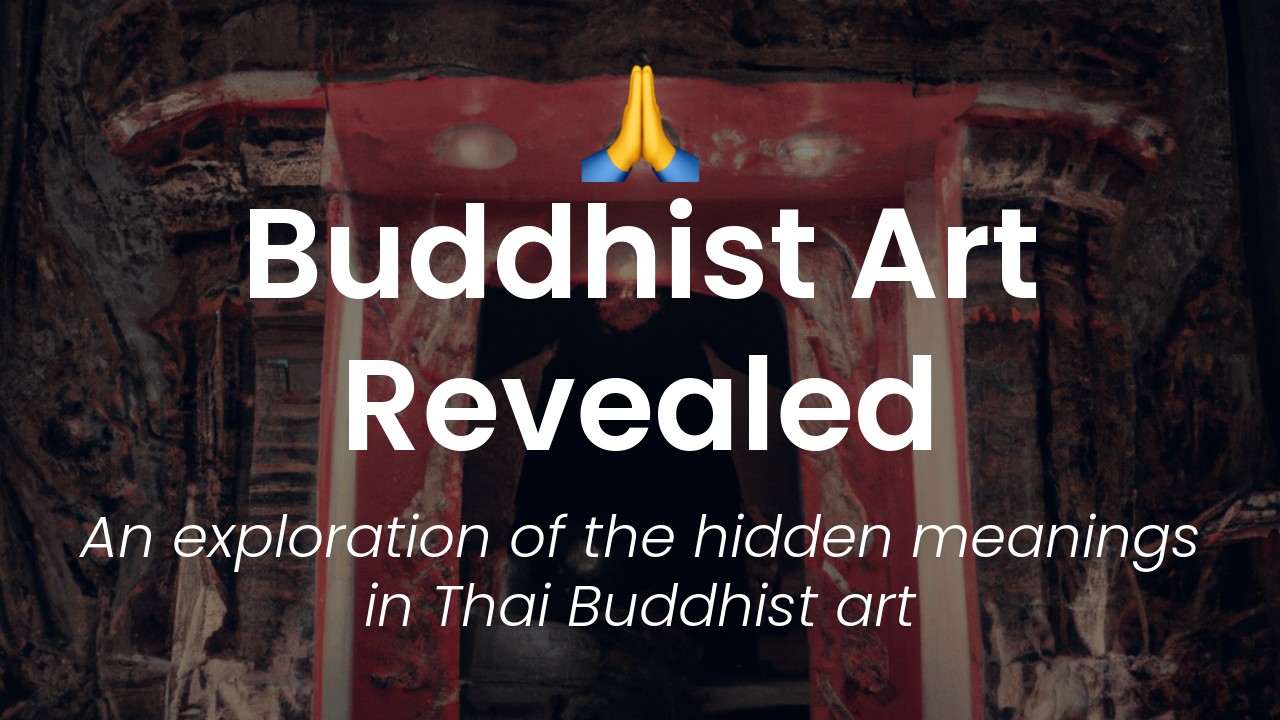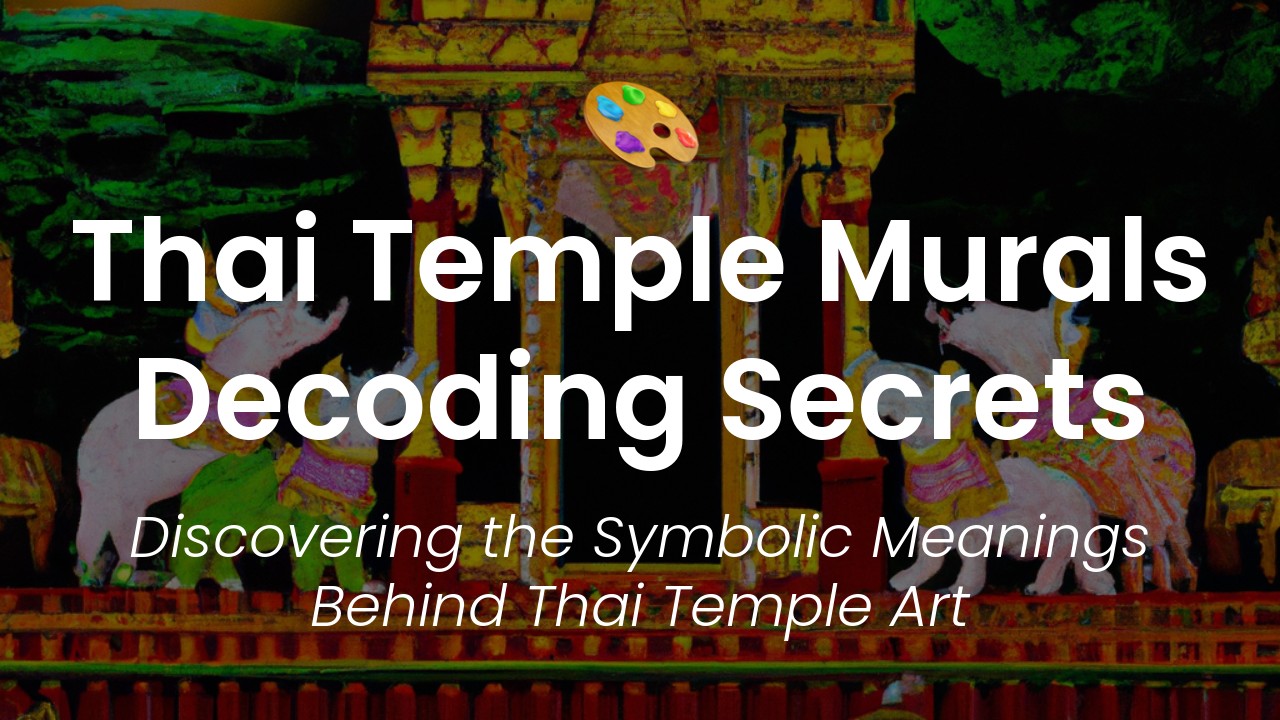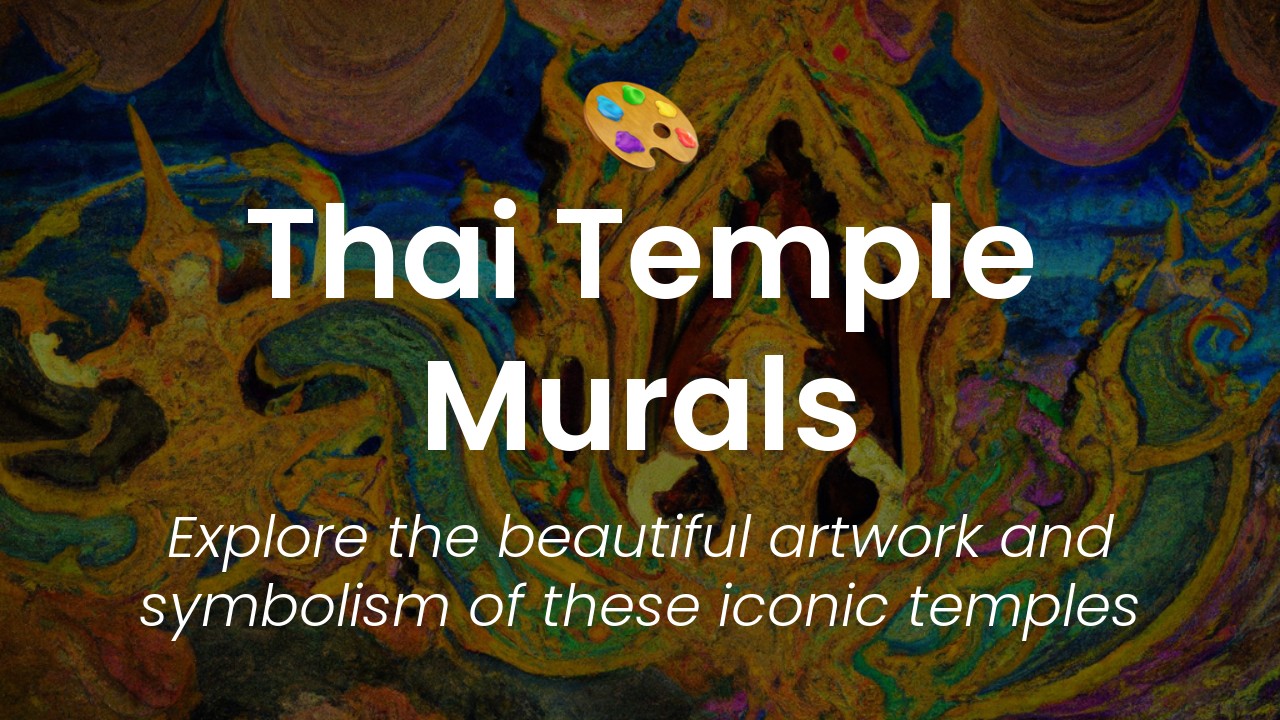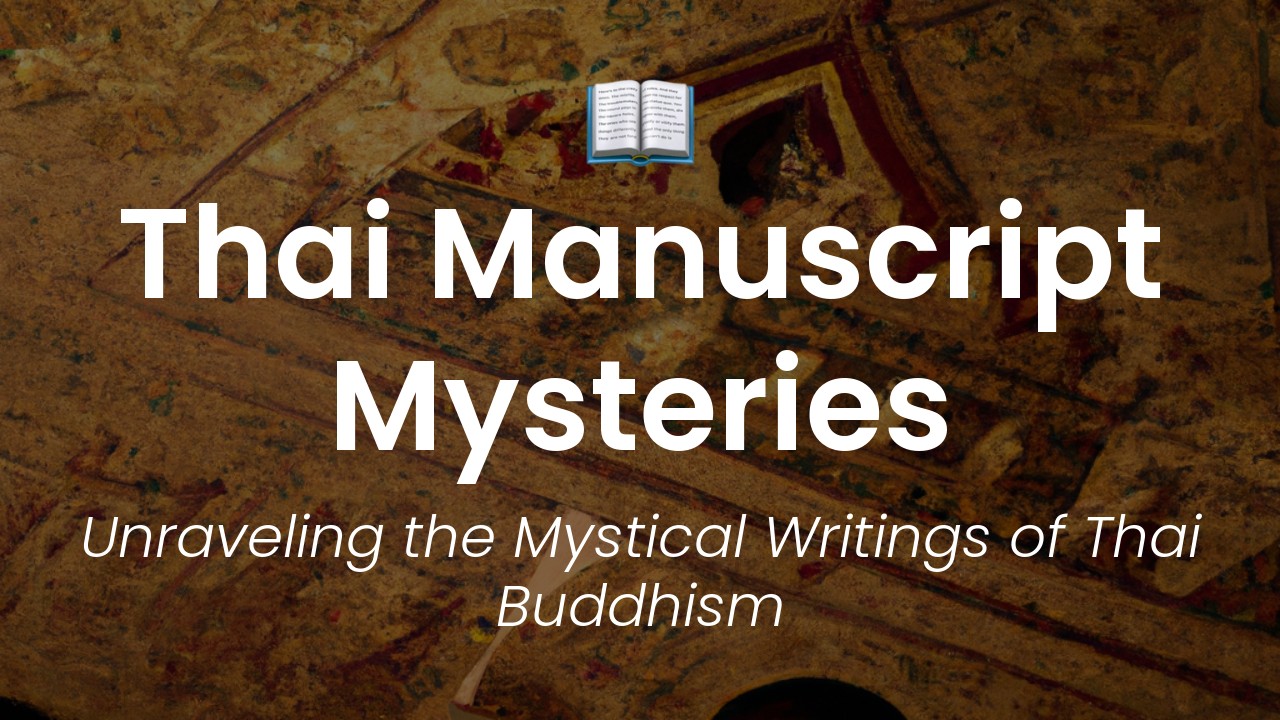Hello, fellow travelers and culture enthusiasts! I am Sirinya, and in today's article, we will delve into the fascinating world of Thai art and explore the profound influence of Buddhist motifs within it. As you might know, Buddhism has a long and profound history in Thailand; it has shaped the country's culture, society, and daily life in many ways. It should come as no surprise, then, that Buddhist art has also played a significant role in Thailand's visual language, and that its motifs and symbols can be found in various art forms throughout the country.
First, let's look at some historical background to place Buddhist art in context. Buddhism first arrived in Thailand around the 3rd century BCE, brought by Indian merchants and monks who settled in the coastal areas. Over time, it spread throughout the land, and as it did, it became an integral part of Thai culture and identity. As a result, Buddhist art flourished in Thailand, becoming one of the most prominent art forms in the country.
To appreciate the depth and diversity of Buddhist motifs in Thai art, one must understand the underlying philosophy and symbolism of Buddhism itself. Central to Buddhism is the concept of the wheel of life, or samsara, which represents the endless cycle of birth, death, and rebirth. Depictions of this cycle can be found in traditional Thai mural paintings, temple murals, and other art forms. Other common Buddhist motifs include the lotus flower, which symbolizes purity and enlightenment, the bodhi tree, under which the Buddha achieved enlightenment, and the Buddha himself, in various poses and expressions, each with its unique meaning and significance.
In the following sections, we will explore some of the most intriguing and meaningful Buddhist motifs in Thai art, from the colorful murals adorning temple walls to the intricate sculptures, wood carvings, and paintings that constitute the country's art heritage. Get ready to be amazed and inspired by the rich and profound Buddhist art of Thailand!
Depictions of Buddha in Thai Art
Buddhism is an integral part of Thai culture, and therefore, it is not surprising that Buddhist motifs are heavily present in Thai art. The depiction of Buddha in Thai art showcases the cultural and artistic diversity of the country. Buddha is a representation of enlightenment, compassion, and peace. The depiction of Buddha in Thai art is varied and fascinating. There are different postures, such as standing, sitting, or lying down, each with its own significance. Moreover, there are also different hand gestures, known as mudras, which represent different things.
One of the most popular depictions of Buddha in Thai art is the Reclining Buddha. This posture depicts Buddha lying down on his side with his head resting on his hand. The Reclining Buddha is said to represent Buddha's last moments before he passed away. The Reclining Buddha is usually depicted wearing a peaceful expression, with his eyes closed. The posture represents the notion of complete release from the physical world, and the attainment of enlightenment.
Another popular posture is the Walking Buddha, where Buddha is depicted taking steps forward with his right foot while his left foot is lifted up. This posture signifies Buddha's readiness to teach his disciples and spread the message of enlightenment. It is said that Buddha walked 875,000 steps during his lifetime, hence why this posture is often depicted in Thai art.
Lotus Flower Motif
Another motif that is prominent in Thai art is the Lotus Flower. In Buddhist culture, the lotus flower is a symbol of purity and enlightenment. It represents the idea of rising above the chaos of the world and finding enlightenment. The lotus flower is especially significant in Thai art, reflecting the importance of Buddhism in Thai culture.
The lotus flower motif is often depicted in bright colors and intricate details, making it a captivating sight. The motif can be seen in various forms of Thai art, such as temple architecture, paintings, and sculptures. It is not just the beauty of the flower itself that is captured in Thai art, but rather, its symbolic significance in Buddhist culture.
Naga (Serpent) Motif
The Naga, or serpent, is another intriguing motif present in Thai art. The Naga is a mythical creature that is believed to dwell in water bodies, such as rivers and lakes. In Buddhist culture, the Naga is a symbol of protection and fertility.
The Naga motif is often seen in temple architecture and artwork. It is usually depicted as a serpent or dragon with several heads, coiled around pillars or staircases. The intricate carvings and details of the Naga motif in Thai art are awe-inspiring and showcase the impressive skills of Thai artisans.
Garuda (Mythical Bird) Motif
The Garuda is a mythological bird that is prevalent in both Hindu and Buddhist cultures. In Thai culture, the Garuda is a symbol of power and strength. The Garuda is depicted as a bird-like creature with a human face. The bird's wings are often depicted spread out wide, representing the Garuda's power and ability to soar high.
The Garuda motif is often seen in temple architecture and paintings. In Thai art, the Garuda motif is often depicted in a fierce and powerful manner, showcasing its significance as a symbol of strength.
Thai Temple Art and Wall Murals
Thai temples are known for their ornate architecture, intricate carvings, and beautiful artwork. The walls of Thai temples are often adorned with murals that depict different scenes from Buddhist mythology. The murals are a testament to the importance of Buddhism in Thai culture and provide a visual representation of the religion's teachings.
The murals often depict scenes from the Jataka tales, which are stories that teach moral lessons. The artwork is often bright and colorful, showcasing the artistic skills of Thai artisans. The murals not only provide a visual representation of Buddhist teachings but also serve as a way to preserve Thai cultural heritage.
Conclusion
Thai art is a fascinating blend of artistic excellence and cultural diversity. The motifs present in Thai art showcase the significance of Buddhism in Thai culture and provide a window into the rich history of the country. Whether it is the depiction of Buddha, the lotus flower, the Naga, or the Garuda, Thai art is a visual masterpiece that captures the essence of the country's cultural heritage.

